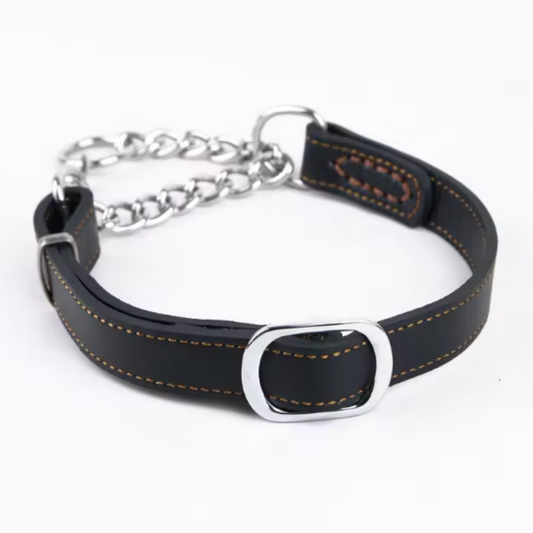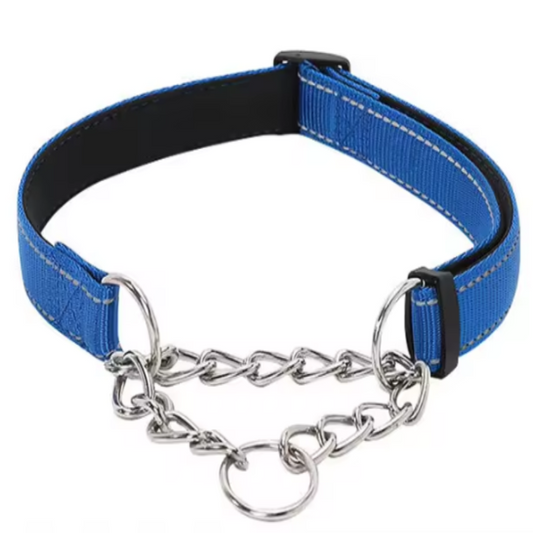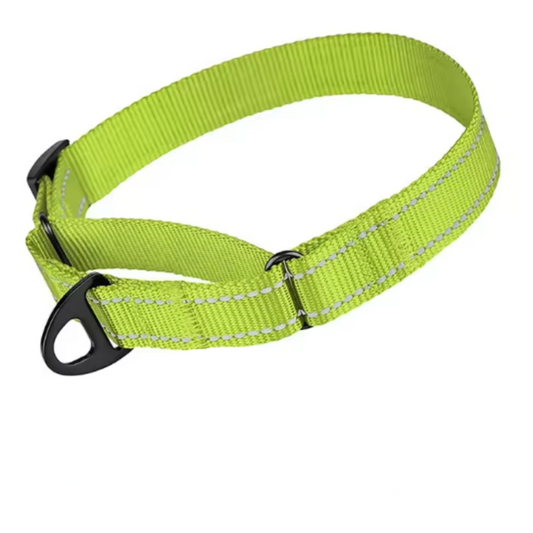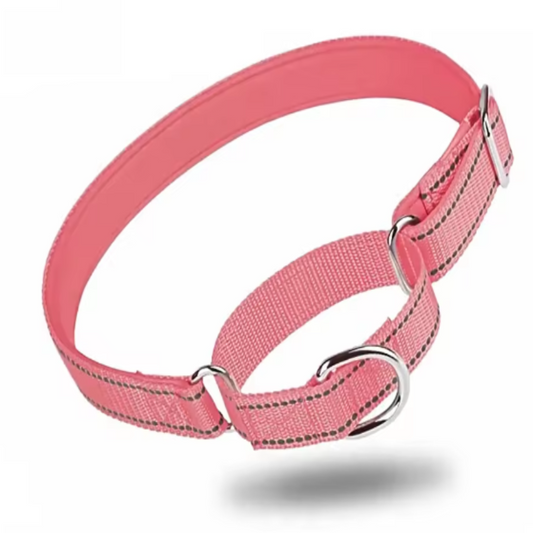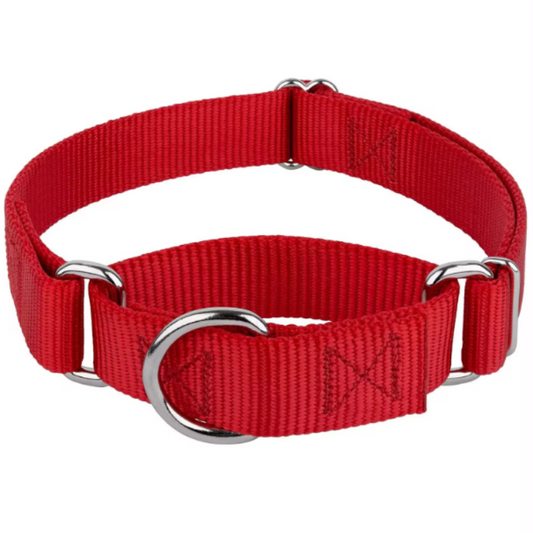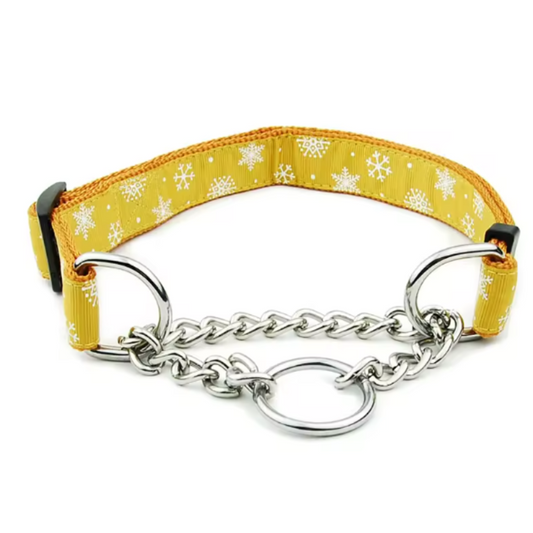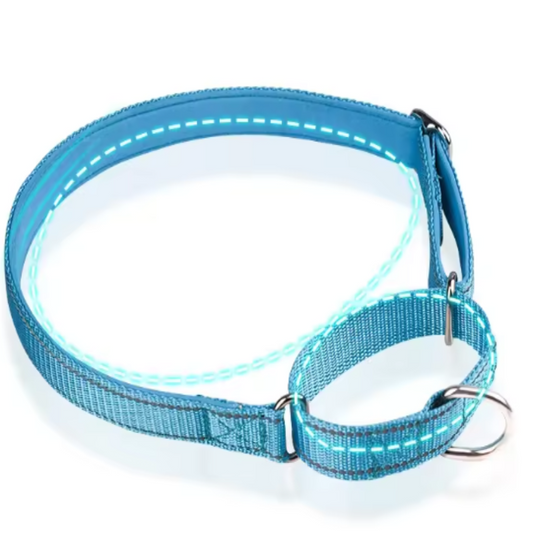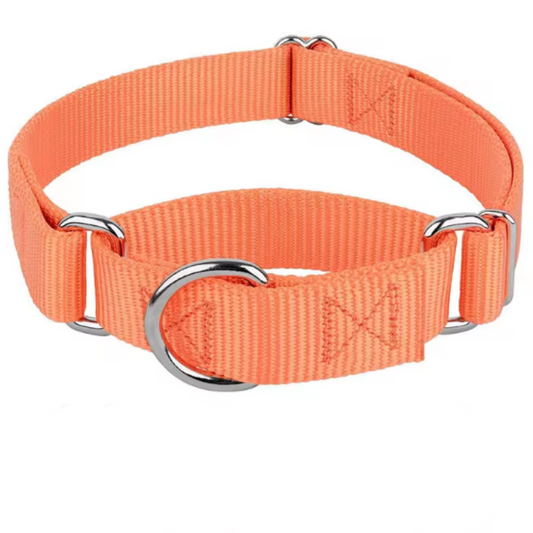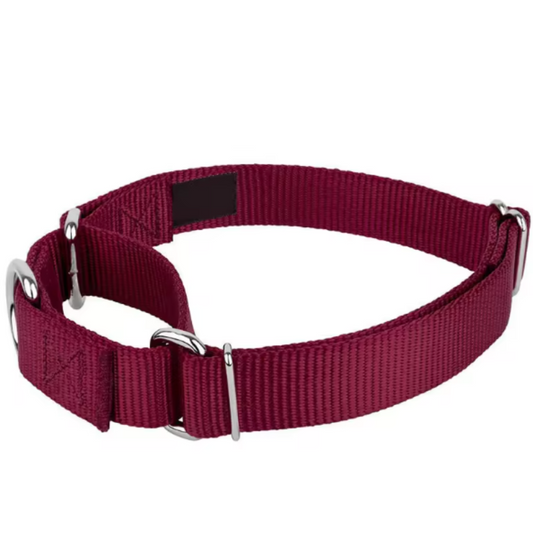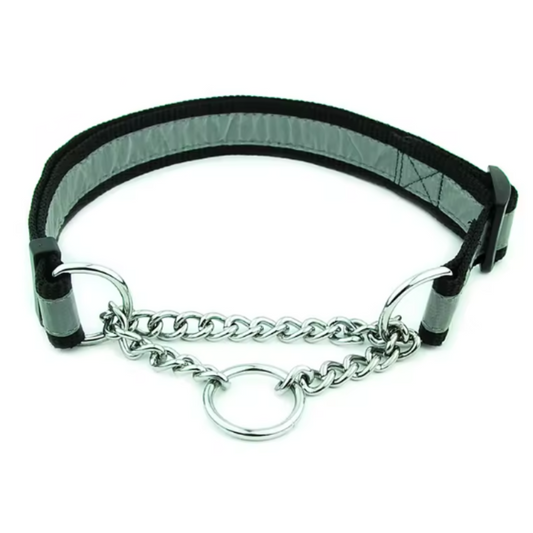Martingale dog collars, often referred to as half-choke collars, are a popular option among dog owners looking for a blend of security and comfort. Unlike traditional flat collars, martingales are designed to tighten slightly when your dog pulls, ensuring that the collar remains snug without causing harm. This unique design makes them particularly beneficial for breeds with narrow heads, as they prevent the collar from slipping off during walks or training sessions. However, it’s essential to understand how they function and when to use them effectively.
Understanding Martingale Dog Collar
The martingale collar consists of two loops: one that goes around the dog’s neck and a second, adjustable loop that tightens when the dog pulls. Unlike choke collars, which can apply excessive pressure and pose risks to a dog’s trachea, martingales provide a gentler form of control. This collar type does not excessively restrict the dog’s neck; it simply offers enough tension to discourage pulling without causing pain.
Martingales are particularly useful in situations where your dog might become excited or anxious, such as during trips to the vet or on busy streets. The collar remains loose under normal conditions, allowing for comfortable wear. However, when your dog begins to pull, the collar tightens slightly, providing a clear cue to your pet without the harshness associated with prong or choke collars.
The Misconceptions Around the Martingale Dog Collar
While martingale collars are effective for many dog owners, it’s crucial to address common misconceptions about their use. Some believe that martingales can replace proper training techniques for loose leash walking. This is not the case. While the collar does provide some control, it is not a substitute for positive reinforcement training methods. Martingales do not inherently improve a dog’s behavior; they are simply a tool to help manage pulling.
It’s important to note that martingale collars do not exert less pressure on a dog’s neck than a flat collar once tightened. While they may offer a gentler alternative to choke collars, they function similarly to flat collars when fully tightened. This means that if your dog continues to pull, the pressure can become uncomfortable. Understanding this distinction is vital for responsible collar use.
Correct Usage of Martingale Dog Collar
To ensure your martingale collar fits correctly, you should follow these steps:
-
Fit the Collar Properly: Start by placing the collar around your dog’s neck and using the adjustable buckle to tighten it until you can comfortably slip a flat hand underneath. This ensures that the collar is snug but not overly tight.
-
Observe the Tightening Mechanism: When you attach the leash and give a gentle tug, the collar should tighten slightly without constricting the dog’s airway. If the collar is too loose, it may slip over your dog’s head during moments of excitement, and if it’s too tight, it can cause discomfort.
-
Monitor Your Dog's Behavior: While martingales can help manage pulling, they are not training devices. If your dog continues to pull, focus on teaching them proper leash manners through positive reinforcement training techniques.

